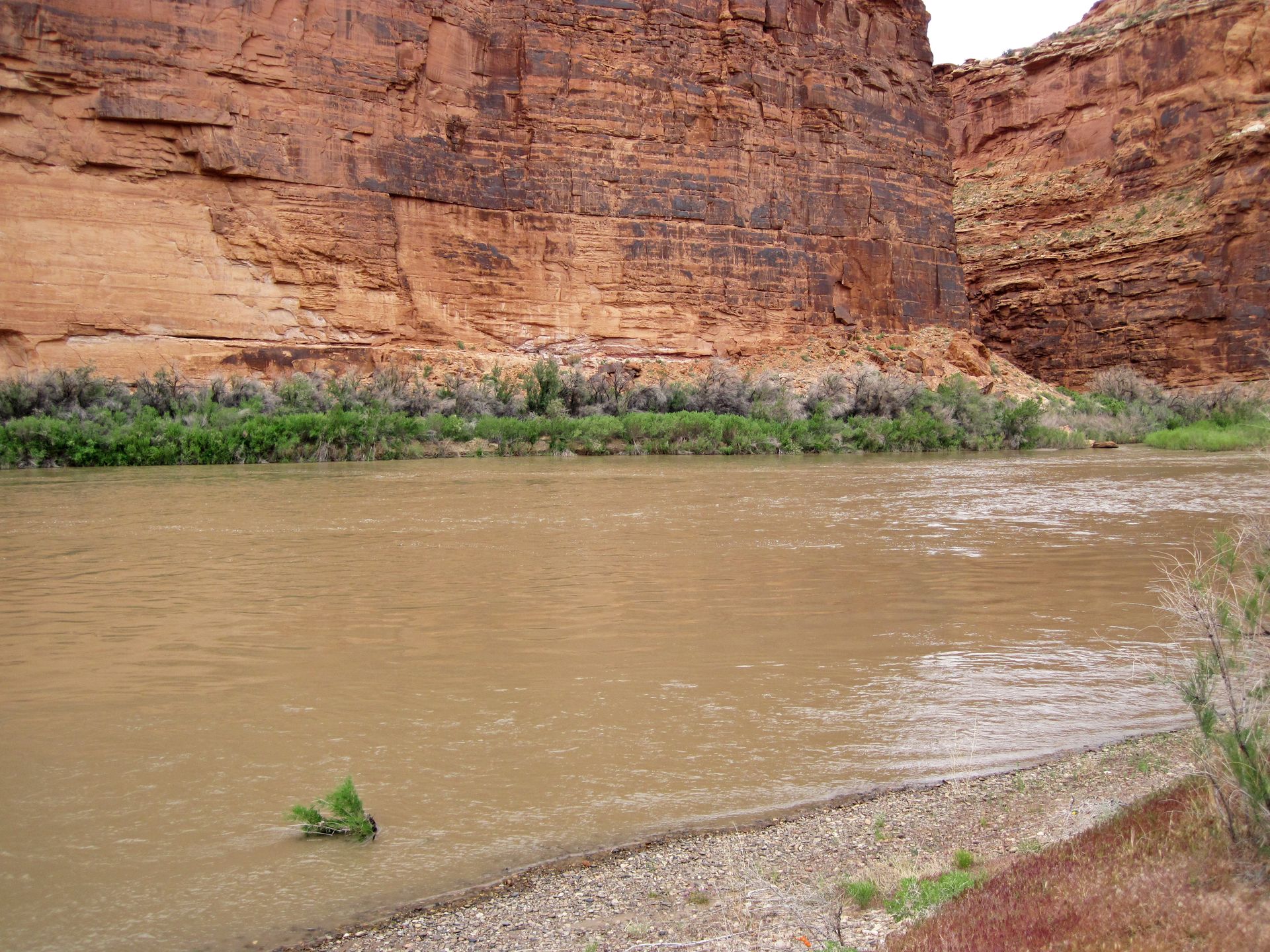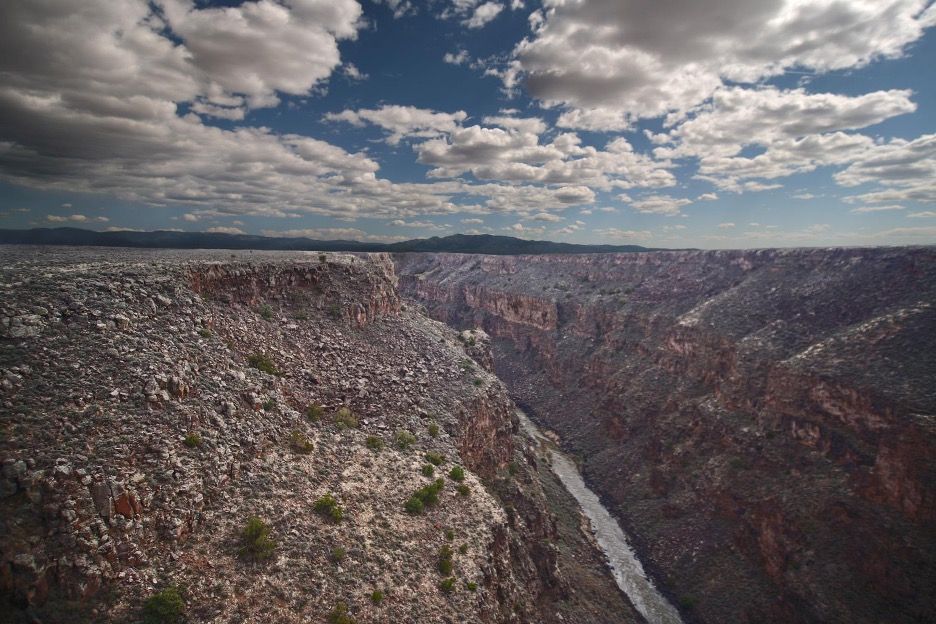Western Water Management: Anthropocentric Foundations, Expanded Future Possibilities
American water law and policy has a deeply anthropocentric foundation, centering human use and benefit in its conception of water management and water rights litigation. The system’s contours reflect ideological frameworks that prioritize human considerations, as framed by economic-driven water markets, public trust doctrines, and private water rights ownership and groundwater extraction. These lack the necessary frameworks to adapt to climate stressors, create sweeping, ecosystem-scale protections, and holistically address ecological concerns. As climate change further threatens water resources in the Western United States and the underlying assumptions under which those rights and allocations were originally granted, our water system will inevitably struggle to maintain "secure" water rights and allocations. To address these complex, multi-scale issues, Western U.S. water law must shift the needle away from singularly anthropocentric frameworks towards those which accommodate ecological and biocentric considerations.
As Colorado undergraduate students, we are uniquely positioned to both bear the effects of these unfolding challenges and to shape the next generation of Western water and environmental law. Mindful of these tensions, we utilize a ‘Goldilocks’ framework to explore what a pragmatic, yet reimagined, approach to contemporary water management might look like. Drawing upon three existing examples, we illustrate and advocate an approach that more effectively balances anthropocentric and biocentric considerations. We first explore the biocentric end of a spectrum of potential legal responses, highlighting efforts to enshrine rights of nature provisions by securing legal personhood for the Colorado River ecosystem. This approach, while deeply biocentric, illustrates how efforts to bring about abrupt shifts can actually inhibit courts from making actionable progress within our current system. Second, we explore the anthropocentric end of the spectrum, highlighting how intergenerational considerations are being introduced in Western groundwater management. This conceptualization has proven successful in progressing a sustainable future for groundwater availability, though this approach has proven insufficient, as currently framed, to prospectively protect non-human water interests. Finally, we highlight Colorado’s instream flow (“ISF”) program as an example of an approach that strikes some balance on this spectrum. By incorporating biocentric goals within broader anthropocentric frameworks, we argue that this approach might hold the key to structuring future water management approaches that are just right.
Rights of Nature and Litigating for the Legal Personhood of River Basins: “Too Hot!”
Justice Douglas's renowned dissenting opinion in the 1972 Supreme Court case Sierra Club v. Morton is considered the closest the federal judiciary has come to acknowledging the Rights of Nature in the United States. In contemporary times, the idea of granting rights to natural resources is gaining momentum across the globe. Following suit, the 2017 case Colorado River Ecosystem v. The State of Colorado sought recognition of such non-human legal personhood at an ecosystem scale in U.S. federal courts. The plaintiffs referenced Justice Douglas’s Sierra Club v. Morton dissenting opinion in their original complaint, making the argument for a shift in our legal system to allow standing for natural objects. Citizens of Colorado and Utah and the conservation organization Deep Green Resistance petitioned the United States District Court in Denver to recognize and declare the Colorado River Ecosystem as a "person" with the ability to represent its interests in court. The plaintiffs supported their argument by drawing parallels with corporations, which are recognized as legal entities despite being non-human, pointing to how the current legal system perpetuates anthropocentric forms of environmental advocacy. After multiple filings by both parties, the case was dismissed with prejudice. Therefore, while the suit was deemed a good faith attempt to introduce the rights of nature doctrine in the United States, its dismissal with prejudice presents a potential barrier to future rights of nature litigation and efforts to establish ecosystem-scale protections for the Colorado River.
Ultimately, the Colorado River Ecosystem case presents an unfortunate truth: racing too far towards the biocentric end of the spectrum can prevent actionable progress. Since our dominant, anthropocentric legal system appears unwilling to fundamentally change established environmental and water law structures, a middle approach could help allow the courts to shift one step at a time.
Intergenerational Equity and Groundwater: “Too Cold!”
Intergenerational considerations and the international environmental law principle of intergenerational equity have increasingly shaped environmental litigation in the United States and abroad. The concept has been used to require sustainable stewardship of natural resources, particularly since the 1994 Philippine Supreme Court opinion,
Minors Oposa v. Factoran. Increasingly, notions of intergenerational equity have informed global understandings of water law and justice. For instance, the Brasilia Declaration of Judges on Water Justice begins by underscoring environmental stewardship and intergenerational equity as key tenets of water justice. The principle has also been used to shape legal doctrine regarding water and, increasingly, groundwater. For instance, Australian courts have enjoined mine expansions based on anticipated effects on groundwater for future generations. Likewise, in the U.S., scholars and courts alike have demonstrated progress in considering whether groundwater may properly be viewed as a public trust resource, to be stewarded for future generations.
These shifts towards including intergenerational equity in water law are pushing toward sustainable groundwater management practices, yet the framing still reflects anthropocentric values. The Australian case halted the expansion of detrimental development and the push in California has set the U.S. on a path toward the consideration of future generations, but both did so in the name of protecting future human use and rights to extract groundwater. Therefore, the protection serves only to preserve continued exploitation of water as a resource, rather than to protect the water itself.
Instream Flow Rights: “Just Right...?”
By solely centering either anthropogenic or biocentric considerations, many of our current approaches to water management fall short. It is necessary, then, to find an avenue forward that can balance biocentric environmental goals and anthropocentric human considerations. One potential illustration of such an approach is provided by Colorado’s Instream Flows (“ISF”) program.
While not a new system of rights by any means, the ISF program maintains biocentric and biocentric goals while operating within the broader framework of Colorado’s water property rights system. The program, established in 1973, allows ISF water rights to be held by the Colorado Water Conservation Board (“CWCB”). While initially controversial, the ISF program has had the necessary time to seep into public, legal, and judicial acceptance, and its unique blend of ideals has allowed the program to flourish within the state. Although the CWCB is the only party that can hold ISF water rights, the scope of the program has been extensive within the state. ISF rights have been able to protect more than 9,700 miles of stream in Colorado, signaling the program's efficacy in advancing its environmental mission. However, this protection comes within the broader economic framework of Colorado’s water market, wherein economic power lies heavily in favor of anthropocentric-minded agents seeking to secure water rights for human consumptive uses and/or economic goals. In this way, Colorado’s ISF program functions to introduce biocentric water management considerations, while successfully operating within the greater anthropocentric economic and legal systems.
This isn’t to say that the ISF program is beyond analysis and critique. By nesting within the prior appropriation system, a majority of ISF rights are more often appropriated rather than acquired, therefore holding junior status. However, the acquisition of these rights allows communities, cities, and even states to actively defend instream flows, hold back future diversions, and influence existing management and diversion practices via enforcement and management of the existing water rights system. While many facets of the program are steeped in anthropocentrism, Colorado’s ISF program may hold a roadmap to necessary balance by incorporating biocentrism in its fundamental mission of environmental protection.
A Biocentric Future within Current Means
In many ways, Colorado’s system of ISF rights can serve as an example of balance for other approaches to water management. Changing broader economic and legal systems may be both foolhardy and ill-advised, but Colorado’s ISF program shows that it is possible to work within these systems while supporting environmental protection and local engagement with environmental issues. The power of ISF rights demonstrates how environmental initiatives can inform better water management practices when neither biocentric nor economic goals take explicit precedence over the other.
While recognizing shortcomings in their scope, both anthropocentric and biocentric approaches are vital to the conversation of finding more sustainable water practices and legal strategies. Recognizing rights of nature in the court systems can and will be an extremely effective tool—when the timing is “right” and public perception acknowledges that humans and nature are inextricably linked. When those elements are in place, a rights of nature approach in U.S. courts could then be seen as a successful, balanced legal approach. Similarly, the language of intergenerational equity often revolves around holding resources in trust for future beneficiaries, which, if more broadly defined, could in turn support consideration of more biocentric interests. Holding the interest of both humans and nature in trust may allow for intergenerational equity approaches to account for nature without shifting farther than the courts are willing to accept. For the Western United States legal system to truly adapt to increased water demand and an increasingly variable climate, it must ultimately undergo an ideological shift. American water law must evolve past its current anthropocentrism to include ecological and biocentric goals and frameworks. As demonstrated by Colorado’s ISF program, this evolution can occur, yet the most successful strategies will work themselves into existing frameworks that courts may find acceptable, pushing the envelope from within established systems.
SOURCES
- Chapron Guillame et al., A rights revolution for nature, Science363, 1392-93 (2019),
https://www.science.org/doi/10.1126/science.aav5601.
- Colo. River Water Conservation Dist. v. Rocky Mountain Power Co., 406 P.2d 798 (Colo. 1965),
https://law.justia.com/cases/colorado/supreme-court/1965/20925.html.
- Colorado Water Conservation Board, Instream Flow Program,
- Compl. for Dec. Relief. Colo. River Ecosystem et al. v. State of Colo., No. 1:17-cv-02316-RPM (D. Colo. 2017),
- Craig Anthony (Tony) Arnold, Adaptive Watershed Planning and Climate Change, 5 Envt'l & Energy L. & Pol'y J. 417, (Fall 2010),
https://papers.ssrn.com/sol3/papers.cfm?abstract_id=1712027.
- Derek Kliewer, Protecting the Public Trust: How an Ancient Environmental Doctrine and Modern Legislation Can Save California’s Groundwater, 25 U. Denv. Water L. Rev. 27, (Fall 2021),
- Env’tal Law Found. v. State Water Res. Control Bd., U.S. 3, (2018),
https://law.justia.com/cases/california/court-of-appeal/2023/c093513.html.
- Evan Weis, A Social Function Of Water: How Colorado’s Doctrine Of Prior Appropriation Can Prepare For The Future By Returning To Its Headwaters, 26 U. Denv. Water L. Rev. 105, (Fall 2023).
- Minors Oposa v. Sec’y of the Dep’t of Env’tal & Nat. Res., 33 I.L.M. 173, 187-88 (Phil. 1993),
- New Acland Coal Pty Ltd. v. Ashman & Ors and Chief Exec., Dep’t of Env’t and Heritage Prot., QLC 24 (Austl. 2017),
https://www.queenslandjudgments.com.au/caselaw/qlc/2017/24.
- Peter Lawrence, Justice for Future Generations: Climate Change and International Law, Cambridge University Press, March 2012, pp. 83,
https://pure.uvt.nl/ws/files/4393432/Lawrence_Justice_28_10_2013_emb_tot_29_10_2014.pdf.
- Robin Kundis Craig, A Comparative Guide to the Westrn States’ Public Trust Doctrines: Public Values, Private Rights, and the Evolution Toward an Ecological Public Trust, 37 Ecology L.Q. 53, (2010),
https://papers.ssrn.com/sol3/papers.cfm?abstract_id=1405822.
- Santa Clara Cnty. v. S. Pac. R.R. Co., 118 U.S. 394 (1886),
https://supreme.justia.com/cases/federal/us/118/394/.
- Sierra Club v. Morton, 405 U.S. 727 (1972),
https://supreme.justia.com/cases/federal/us/405/727/.
- Steven M. Smith, Instream Flow Rights within the Prior Appropriation Doctrine: Insights from Colorado, Natural Resources Journal, Vol. 59, No. 1, Winter 2019, pp. 181–213,
- The Honorable Gregory J. Hobbs, Jr., Distributive Water Justice: Colorado’s Doctrine of Prior Appropriation Incorporates Instream Flow Rights on Behalf of the People, 22 U. Denv. Water L. Rev. 377, (Spring 2019).



